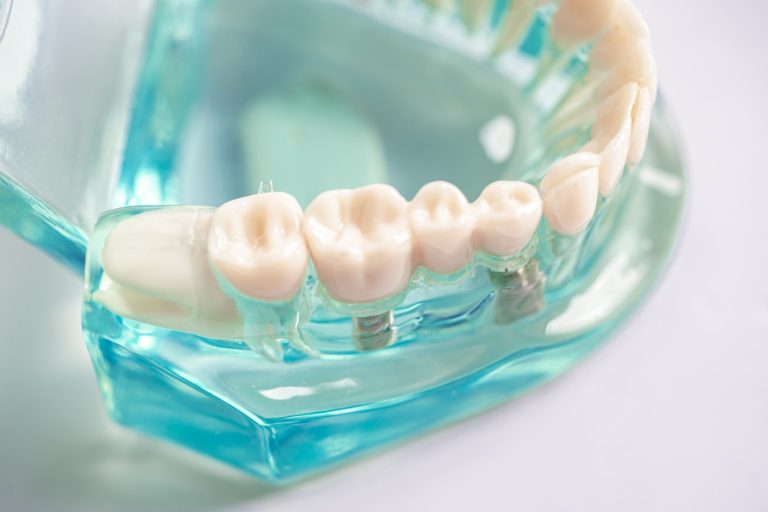Gum disease, also known as periodontal disease, is a prevalent oral health issue affecting millions of individuals worldwide. Left untreated, it can lead to tooth loss and potentially increase the risk of heart disease, stroke, and other serious health conditions. At Colorado Gum Care Broomfield, CO, our experienced dental professionals are committed to helping you better understand the different stages of gum disease, identify the causes, recognize the symptoms, and explore the various treatment options available to maintain optimal gum health.
In this comprehensive guide, we’ll take a deep dive into the stages of gum disease, ranging from the initial, reversible phase called gingivitis to advanced stages like periodontitis. Understanding these stages and their implications is critical for early intervention and preventing progression, thus safeguarding your overall oral health. Furthermore, we’ll discuss prevention and treatment strategies to ensure a lifetime of healthy gums and a dazzling smile.
1. Gingivitis: The First Stage of Gum Disease
Gingivitis is the mildest and earliest stage of gum disease, characterized by inflammation of the gum tissue caused by the buildup of dental plaque. Plaque is a sticky film of bacteria that forms on teeth and, if not adequately removed through daily brushing and flossing, can lead to gum irritation and inflammation. Symptoms of gingivitis may include red, swollen gums, bad breath, and bleeding during brushing or flossing.
Gingivitis is reversible with timely and appropriate intervention. A consistent oral hygiene routine, professional dental cleanings, and a commitment to attending regular dental checkups can successfully reverse gingivitis and prevent the progression of gum disease. The American Academy of Periodontology (AAP) states that more than a third of the U.S. population aged 30 and above have some form of periodontal disease, highlighting the importance of addressing gingivitis in its early stages.
2. Periodontitis: The Second Stage of Gum Disease
If gingivitis is not adequately treated, it can progress to periodontitis, a more severe form of gum disease. In this stage, the inflammation extends beyond the gums, affecting the underlying bone and fibers that hold teeth in place. The chronic inflammatory response breaks down the supportive structures, leading to the formation of periodontal pockets – spaces between the gums and teeth, which can harbor bacteria and exacerbate the condition.
Periodontitis has several subcategories, based on severity and pattern of bone destruction:
- Aggressive Periodontitis: A rapid form of periodontal disease, characterized by significant attachment loss and bone destruction, generally seen in otherwise healthy individuals.
- Chronic Periodontitis: The most common form of the disease, characterized by the slow progression of attachment loss and bone destruction.
- Necrotizing Periodontitis: A severe form of gum disease, characterized by the rapid, painful destruction of gum tissue, tooth-supporting ligaments, and bone.
3. Symptoms and Warning Signs of Gum Disease
It is crucial to identify gum disease symptoms and seek professional help for early intervention. Some of the common warning signs include:
- Swollen, red, or tender gums
- Bleeding during brushing or flossing
- Persistent bad breath or a bad taste in the mouth
- Gum recession, making teeth appear longer
- Loose or shifting teeth
- Formation of deep pockets between teeth and gums
- Changes in bite or fit of dentures
If you notice any of these warning signs, it is essential to consult with a dental professional at Colorado Gum Care Broomfield, CO for an accurate diagnosis and appropriate treatment.
4. Causes and Risk Factors of Gum Disease
The primary cause of gum disease is plaque buildup, resulting from inadequate oral hygiene. However, several factors can increase the risk of developing gum disease:
- Smoking or tobacco use: According to the Centers for Disease Control and Prevention (CDC), smoking is considered one of the most significant risk factors for gum disease (source: https://www.cdc.gov/tobacco/campaign/tips/diseases/periodontal-gum-disease.html)
- Hormonal changes in women: Fluctuations in hormones during puberty, menstruation, pregnancy, and menopause can make gum tissue more vulnerable to inflammation and gum disease.
- Genetic predisposition: Some individuals may be genetically susceptible to gum disease and require more stringent preventive measures.
- Certain health conditions, such as diabetes, can impair the immune system, making it harder to fight off gum infection and prolonging the gum-healing process.
- Certain medications that cause dry mouth, reducing saliva production, can increase the risk of gum disease, as saliva helps wash away bacteria and neutralize acids.
5. Treatment Options for Gum Disease
Treatment for gum disease depends on the severity of the condition. In milder cases, improving your oral hygiene routine and receiving professional dental cleanings can reverse gingivitis. In more advanced stages of periodontitis, treatment may require more intensive procedures:
- Scaling and root planing: A deep-cleaning procedure involving the removal of plaque and tartar from above and below the gumline and the smoothing of tooth root surfaces to promote gum reattachment.
- Periodontal surgery: In some cases, surgical intervention may be needed, such as flap surgery to remove tartar deposits in deep pockets, or bone and tissue grafts to regenerate lost bone and gum tissue.
- Medications: Antibiotics, mouth rinses, and other medications may be used in conjunction with non-surgical or surgical treatments to reduce bacteria and promote healing.
As with any oral health issue, prevention is key to maintaining optimal gum health. Adhering to a consistent and thorough oral hygiene routine, avoiding tobacco use, and scheduling regular dental checkups at Colorado Gum Care Broomfield, CO are the foundational steps in preventing gum disease and sustaining a healthy smile.
Conclusion
Understanding the stages of gum disease, recognizing the symptoms, and being mindful of risk factors empower you to take control of your oral health. By incorporating a consistent oral hygiene routine, attending regular dental checkups, and seeking timely intervention when concerns arise, you can prevent gum disease and maintain a healthy, radiant smile.
When it comes to expert gum care, the dental professionals at Colorado Gum Care Broomfield, CO are dedicated to offering personalized treatment plans tailored to your unique needs. Do not let gum disease get the better of your oral health; schedule an appointment with our dentist in Broomfield today, and experience the exceptional, compassionate care we provide in protecting and preserving your gums for years to come. Together, we can help you achieve a lifetime of healthy and happy smiles.







